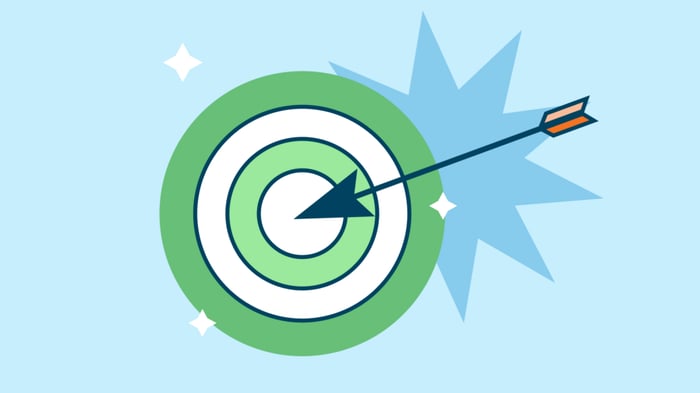5 Steps to Create a Community Online in 2023
Nearly 5 billion people will use social media this year.
That’s over half of the people in the entire solar system — yes, including Pluto.
Humans — whether they’re seeking entertainment, looking for information, or keeping up to date with friends — are highly connected to online communities.
Things aren’t any different when it comes to the companies people love. If they like a product or service, they’ll join like-minded consumers and rally around it.
It’s no surprise, then, that 90% of social media marketers believe online communities are crucial for brands in 2023. One of the best ways to grow your brand and boost your bottom line is to create a community online that people want to connect with.
Of course, that’s easier said than done. To help you get started, this article will guide you through the steps you need to create a community — even if you’re on a budget.

Manage all your social media accounts in one place.
Craft, schedule, & auto-post content to all your social channels, then track analytics and manage interactions from a single, easy-to-use dashboard.
Why do you need to create a community online?
People spend a lot of time online. Users are on social media and other social apps for 144 minutes a day. Naturally, they’ve created online communities, which can positively impact one’s well-being as much as real-life communities. The same advantage applies to businesses.

Social media has given brands the unique opportunity to get much closer to potential customers. Building an online community is one way to do that.
Creating a community online is a long-term social media marketing strategy that focuses more on strengthening connections with a group of followers on social media by highlighting shared interests or values. About 80% of executives self-reported that an online community made a big difference to their business success. It’s an indirect and sustainable marketing tool that reaps long-term benefits.
The benefits of a strong online community
- Engagement: A strong online community fosters strong relationships — both between you and customers and also among customers themselves.
- Customer retention: It’s easier and cheaper to retain an engaged audience than it is to acquire new customers.
- Market research: Creating a community provides a source from which you can gather insight based on what your customers are saying. You can ask for feedback about your product or service directly in the community.
- Support: The community becomes a user-driven source of customer support, wherein members can rely on each other for help or questions. In turn, this reduces the burden on your support team. Most importantly, it saves money: Businesses found it 72% cheaper for the community to solve an issue or inquiry than the support team.
- Marketing: Your existing customers market for you via word of mouth, either by promoting products within the community or to others.
- Loyalty: A thriving community tends to create brand ambassadors organically. Other than that, when existing customers feel more connected to your brand, they’re more likely to be loyal.
With all these advantages in mind, it’s clear that creating an online community is worth the cost. But what does it take to build a close-knit circle? Here are the five steps you need to take to start growing your online community.
1. Define your community’s purpose and goals
Planning before launching your brand community is crucial. By defining clear goals, you can organize your strategy to better meet them.

First, ask yourself: Why do you want to create a community, and how will it add value for your customers? What customer emotions are you trying to appeal to? For instance, common goals might include:
- Helping customers be better acquainted with your products
- Increasing sales
- Creating a support system for customers
- Build brand loyalty by rewarding customers with community perks
To accomplish your goals, what experience are you going to offer to satisfy customers? In other words, how will you accomplish making customers feel more connected with your brand? For instance, you might create a Facebook group or involve Instagram followers in a contest or hashtag campaign.
Are you going to rely on established platforms (social media, etc.) or create your own branded community? Or both? Consider the most used platforms, like Facebook, Youtube, Whatsapp, Instagram, and Tiktok. Or do some research on your existing customers via an email poll to see what platforms they frequent.
Do you have the time or the resources to manage the community you create? A community needs continual management to keep it alive and thriving.
Every community, online or offline, needs structure. What community guidelines will you create and enforce? For instance, you might ban NSFW topics or words, irrelevant topics, and of course, any language that creates heated discourse or discrimination. Hiring a content moderator would be a good idea to screen what your followers post.
Finally, how will you measure success? Consider what key metrics you’ll focus on, and be sure to track your progress. You might choose to measure the growth of your community (follower or member count), engagement (overall likes, comments, or shares), or business revenue (conversions, sales, etc.).
After you’ve set goals and clarified your direction, the next step is to deliver.
2. Create high-value content that’s deeply interesting, specific, and helpful
It’s important to invest time and energy into posting outstanding content to fast-track community adoption.

The more value you offer, the more likely you are to get interaction. How do you offer value? The key is in short-form, engaging, persuasive content like video, influencer content, and brand-unique material.
Use video content
Video content has a huge impact on marketing. It’s a great way to increase engagement and close the gap between brand and community.
Most marketers say video helped them increase brand awareness, traffic, and sales and generate leads. In 2022, nearly three-fourths of marketers produced social media videos, and the demand is only growing. An overwhelming amount (91% of people) report that they’d prefer brands to focus on videos in 2023.
Luckily, social media allows for a lot of flexibility for videos. You have the option of posting stories, video posts, or Shorts/Reels/Tik Toks (depending on where you are).
What kind of video content should you post? Consider product reveals, unboxings, or product explainer videos. A community is a great way to promote user-generated content, so you can also ask community members to post their videos (product testimonials, product uses, or Q&As).
Use influencers (if you have the budget for it)
Influencer marketing can spearhead your community efforts.
While costly, influencers have the power to add to your community from their fans and followers. Influencer content is precious because it uses a person’s already-built sense of authority and trust. You can then use your influencers’ content in your community.
An influencer can be your brand ambassador, continually creating content that promotes your brand and community and increases your band of followers. Not only that, 82% of survey respondents have found that the customers they won from influencer marketing were of higher quality than other campaign strategies.
Don’t underestimate the power of social influence.
As an example of high-quality content, DataReportal keeps its community engagement with an ongoing inside joke. In their 2023 Global Overview Report, they included a fun update about the ongoing “battle for the internet” between cats and dogs, with well-researched web and social media search results and statistics for the two animals. This manages to break down the data-heavy seriousness of their report and make their readers feel a sense of togetherness.

3. Include your customers in the conversation
What transforms a group of customers into a community? The fact that they have a greater role to play in your brand. After all, you want a community, not just an audience.

Having an audience sets up one-way communication. A community creates a space with dynamic, two-way communication where members feel like they have a voice.
As such, it’s important to interact with your customers. Here’s how:
Run polls
Post polls daily or every week about brand-relevant topics that get members involved. Polls can be run via a social media status or post, allowing viewers to vote and comment on their thoughts. Or they can be run on social media stories, with the bonus of asking customers what they answered and why.
Request feedback
Ask your followers about their thoughts on a recent product, feature, or service, preferably via stories.
Shoutouts
Single out interesting customers who seem to be active a lot on your posts, in the comments, or your brand hashtag. You can find such devoted customers in your brand hashtags as well. Shoutouts are fun and give other customers an incentive to engage more with your brand with the prospect of being put in the spotlight.
User-generated content (UGC)
While you can’t get UGC overnight, you can start by promoting your brand hashtags consistently, launching contests, and asking for feedback or reviews with images or videos. For instance, the e.l.f. brand used a mixture of influencer collaborations and a hashtag in their contest featuring several prizes. The contest created UGC and unique content for days, and with the wider reach, the community reached an all-time high. Alternatively, you can create an exclusive ambassador program with perks in exchange for promoting your brand everywhere.
Name your community members
Give your community members a fun name! It gives them a sense of… well, community. Youtubers, influencers, internet personalities, and idols do this all the time. Think Gary Vee and the Vayniaks.
What’s better than high-quality content? Consistent content — or, more importantly, consistent interaction with your audience.
4. Engage consistently
Building an online community is no one-time project. Brand communities die if brands don’t participate. It’s important to be consistent in being responsive, welcoming, and ready to answer any questions. If you don’t start the conversation, the community will dry out really quick.

Consistent presence builds trust and loyalty.
At the same time, balance is key. Keep in mind that sometimes it’s okay to back off and let the community resolve issues itself. In other words, be the spark, but stand back and let the fire grow.
Consider bringing in a dedicated social media or community manager. A manager can oversee the community and manage any inter-member issues.
Why does consistent engagement matter?
A staggering 1 in 3 consumers will completely throw a brand away after only a single negative experience. They want excellent service every single time they reach out to you. After two or three bad experiences? You’re lucky if you have 15% of your initial customers. A bad experience is 4-5 times more influential than a positive one.
Consistently engaging with your customers improves sales, customer satisfaction, and your overall marketing strategy. Interacting with them daily leads to more customer insights to help in your research.
The big reason consistent engagement is important is that satisfaction throughout the customer journey is 30% more accurate in estimating customer satisfaction than just the experience of a customer’s single interaction. Engagement can, in turn, increase revenue by 15%.
Consistency is essential in forging trust. It makes sense — the brand shows it’s reliable in how they interact with customers.
Alongside consistency, try focusing on reducing negative experiences. Make sure to address any issues in your community and continually ask for feedback about specific problems with the product or service.
The steps to creating a community online for your brand can seem simple. However, it’s still a lot of moving parts to control. A centralized tool to manage your social media might be helpful.
5. Use a social media management tool
Social media management tools exist to simplify any campaign on social media — including managing your online community. People use an average of 7 different platforms per month. A social media marketing tool can help you keep track of all channels.

Specifically, social media marketing tools help with content Ideation, strategizing, scheduling, Interaction, and analyzing metrics. A tool like Loomly has features that support these aims and empower you to run a community and combat common social media challenges.
With Loomly, you can…
- Simplify your social media marketing campaign workflow
- Manage and prepare content beforehand. Create it, improve it, photos, videos, notes, links
- Receive data-driven suggestions for post ideas based on trends, RSS feeds, and Twitter trends
- Keep your assets (photos, videos, linked, post templates) all in one place
- Auto-generate a post preview before publishing
Social media studio Katie Creative used Loomly to focus on their goal of community building because they realized it was key for their specific target clients. With Loomly, it’s possible to stay organized when growing your online community.
Conclusion
More than half of people from Mercury to Pluto — and every planet in between — are on social media, participating in communities and engaging with the brands they love every day.
Humans are glued to their online spaces like moons to celestial bodies, and they aren’t going anywhere anytime soon.
It’s time to meet them where they’re at and make your name heard.
If you want to create a community online and build your brand, speak with a social media management expert from Loomly today.



